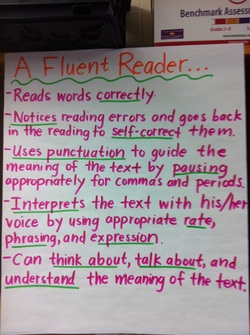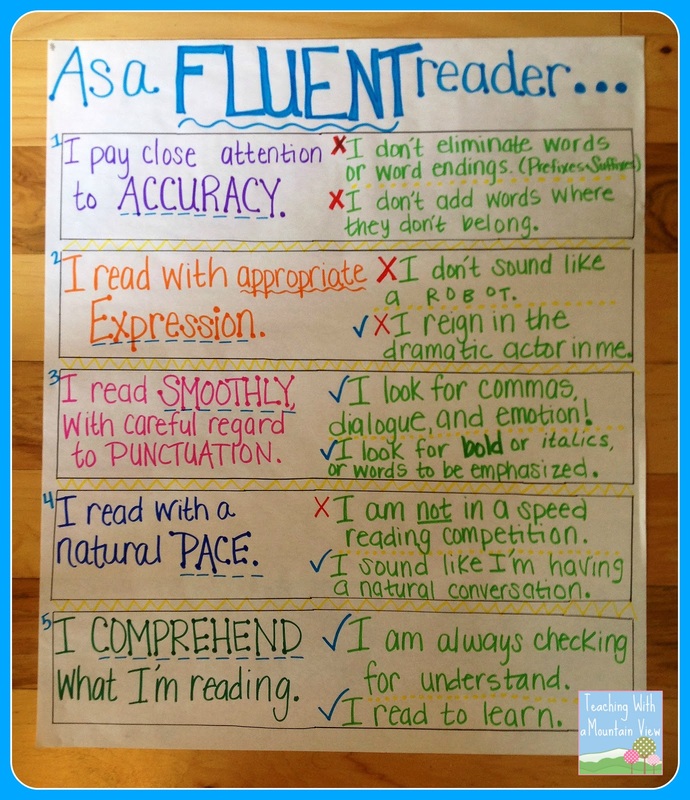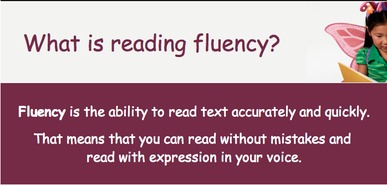Fluent Readers

I Can Read Fluently and Accurately RF.5.4
What is fluency?
According the National Reading Panel (2000), fluency is the ability to read text with speed, accuracy and proper expression. Fluent readers:
Why is fluency important?
If a reader is constantly stopping to decode and figure out unknown words, most likely meaning will be disrupted and the process of reading becomes long and laborious.
When students make gains in reading fluency, they are able to put their energies into comprehension and are able to analyze, interpret, draw conclusions, and infer meaning from texts.
The 3 Components of Fluency
What is fluency?
According the National Reading Panel (2000), fluency is the ability to read text with speed, accuracy and proper expression. Fluent readers:
- Recognize words automatically
- Read aloud effortlessly and with expression
- Do not have to concentrate on decoding
- Can focus on comprehension
Why is fluency important?
If a reader is constantly stopping to decode and figure out unknown words, most likely meaning will be disrupted and the process of reading becomes long and laborious.
When students make gains in reading fluency, they are able to put their energies into comprehension and are able to analyze, interpret, draw conclusions, and infer meaning from texts.
The 3 Components of Fluency
- Accuracy: Also known as automaticity, it refers to the person's ability to read words in a text.
- Rate: The speed a person reads.
- Prosody: Refers to stress, intonation, and pauses. Commonly known as "reading with feeling".
Fluency Links for Home
Here are some links to outside resources that can give you some ideas about working with your student at home on reading fluency.
- What is reading fluency
Here is a site that explains reading fluency in a simple and quick format. Read what they have to say about ideas to help your child improve his/her reading fluency. - Fluency defined
Reading Rockets offers a definition of reading fluency. - Free Stories to download for fluency practice
Reading A-Z.com has many free short stories that can be downloaded to use for fluency practice at a variety of reading levels. The "Story of Jeans" would be a good reading level for a 4th or 5th grader. "Mittens" would be a story better for a first or second grade reader. - Developing reading fluency
The Reading Genie offers several ideas for developing reading fluency. - Parent tips brochure
The U.S. Department of Education offers a free brochure to parents suggesting several tips for helping children with reading at home. - Reading tip sheets
Colorin! Colorado offers reading tip sheets for several age levels in both English and Spanish. - Parent tips brochure in Spanish
The same brochure for parents with tip for helping their children at home in reading in Spanish. - Rubric describing reading expression
Laura Chandler has published a chart for recording fluency rates as well as excellent descriptions for a child's expressive reading level. - Research supports improved fluency
N. Mather and Sam Goldstein (2001)give a more detailed explanation of reading fluency. Read this article if you are interested in some of the research supporting the importance of fluency as part of a good reading program


